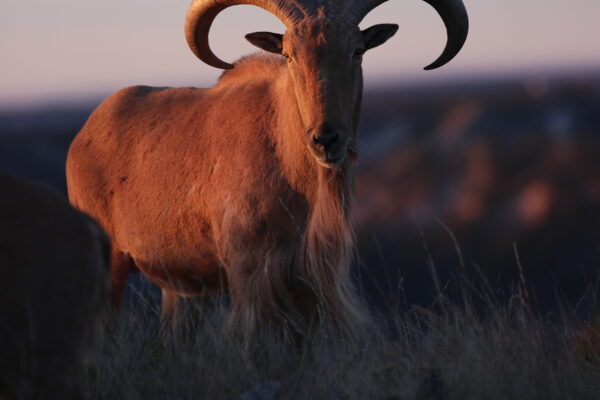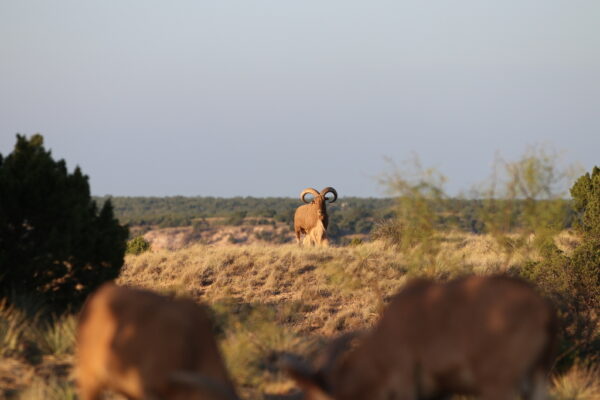The aoudad is an Old World mammalian species studied early by the Greeks. Taxonomists of that day gave the animal the genus Ammotragus, which literally means “sand goat.” They put the animal in the family Bovidae, and subfamily Caprinae. Caprid species are goat-antelope animals. Pallus (1777) recognized Ammotragus lervia. It’s the only specie of Ammotragus.
For 150 years, nobody cared about the classification of Ammotragus. The species was most common along the Barbary Coast of North Africa, and called “aoudad” by the Arabic-speaking people, which also means “sand goat.”
History tells us the name “Barbary sheep” came from Reverend Thomas Shaw (1738), as he traveled the Barbary Coast and described the animal in his “Travels and Observations” about Barbary. Obviously, the wonders of wildlife were not a strong part of Rev. Shaw’s repertoire, since he described the animal as a sheep, while the Greeks labeled it a goat only 40 years later.
Can you legitimately call a goat a sheep? If an animal walks, eats, looks and lives like a goat; if its scientific name today, after 250 years, means sand goat; and if it produces young when crossed with a Nubian milk goat, why would you call it a sheep?
The answer is simple. Nobody cared one way or the other until the middle of the 20th century when the animal had become a standard species for most zoos in the world, and hunters had taken a liking to it in Texas and New Mexico as a prized game animal.
By the 1950s, there were more aoudads scattered around in zoos and on ranches in Texas than were present on their native habitats in North Africa. Hunters became interested in the aoudad as a game animal, and interest in the sand goat skyrocketed. Rev. Shaw’s descriptive name of Barbary sheep also became popular, because a hunter would pay bigger dollars for a sheep than a goat.
The aoudad was one of many exotic ungulates brought to the U.S. as zoo animals in the 1930s and ’40s. Many of these species ended up on large, high fenced ranches in Texas as game animals. High fences and large expanses of terrain were important for keeping aoudads in captivity. Several high fenced ranches in the Edwards Plateau of Central Texas have been successful with the exotic aoudad.
The old Texas Game and Fish Commission stocked aoudad in the Panhandle’s Palo Duro Canyon in the late ’50s. Aoudads still thrive in the canyon today. Many ranches in the mountainous areas of West Texas have also stocked aoudads, which have expanded their range to include many of the counties west of the Pecos.
Here in the U.S., the original moniker given to aoudad—Barbary sheep—has been used by ranchers who advertise Barbary sheep hunts. No one knows why the aoudad gets called a Barbary sheep. Hunters don’t know, and ranchers don’t know. They just liked the word “sheep.” The aoudad should more correctly be called “Barbary goat.”
So, what about this strange mammal with sweeping horns, a neck mane that hangs down between its front legs, agility that resembles that of any goat that spends his days on top of the family pickup, and a physique that is big in front and little in the rear? He will eat almost anything, including dirt; live and do well in high heat or bitter cold. He can’t tolerate high humidity or damp, wet conditions. But give him half a chance and he’ll be thriving when all other mammals of his class and size are gone. He is truly the coyote of the mammal world—the “goat” that Jack O’Connor and Elgin Gates called Barbary sheep.
Shakespeare had it right in Romeo and Juliet: “A rose by any other name would smell as sweet.” What matters is what something IS, not what it might be CALLED. You can call the aoudad a Barbary sheep all day long, but when the sun goes down, he will still be a goat.




